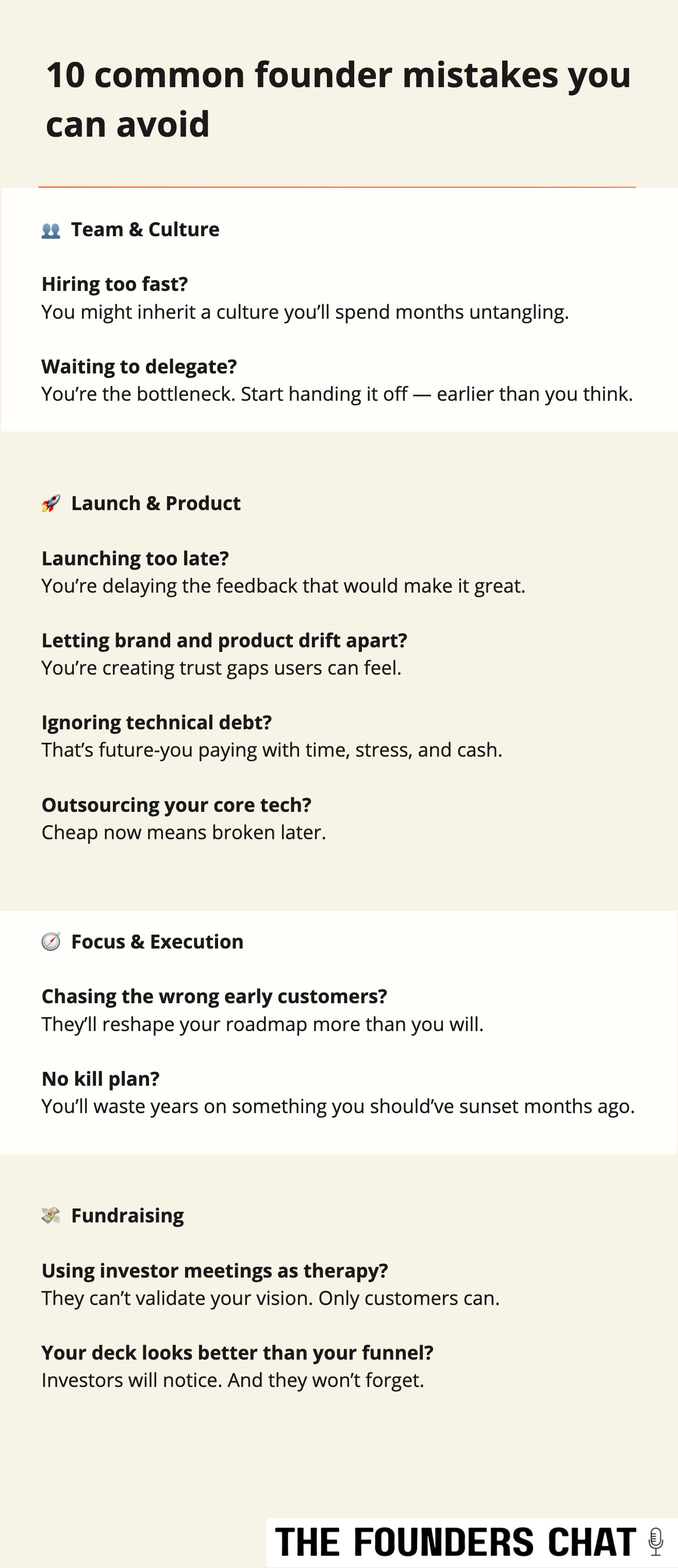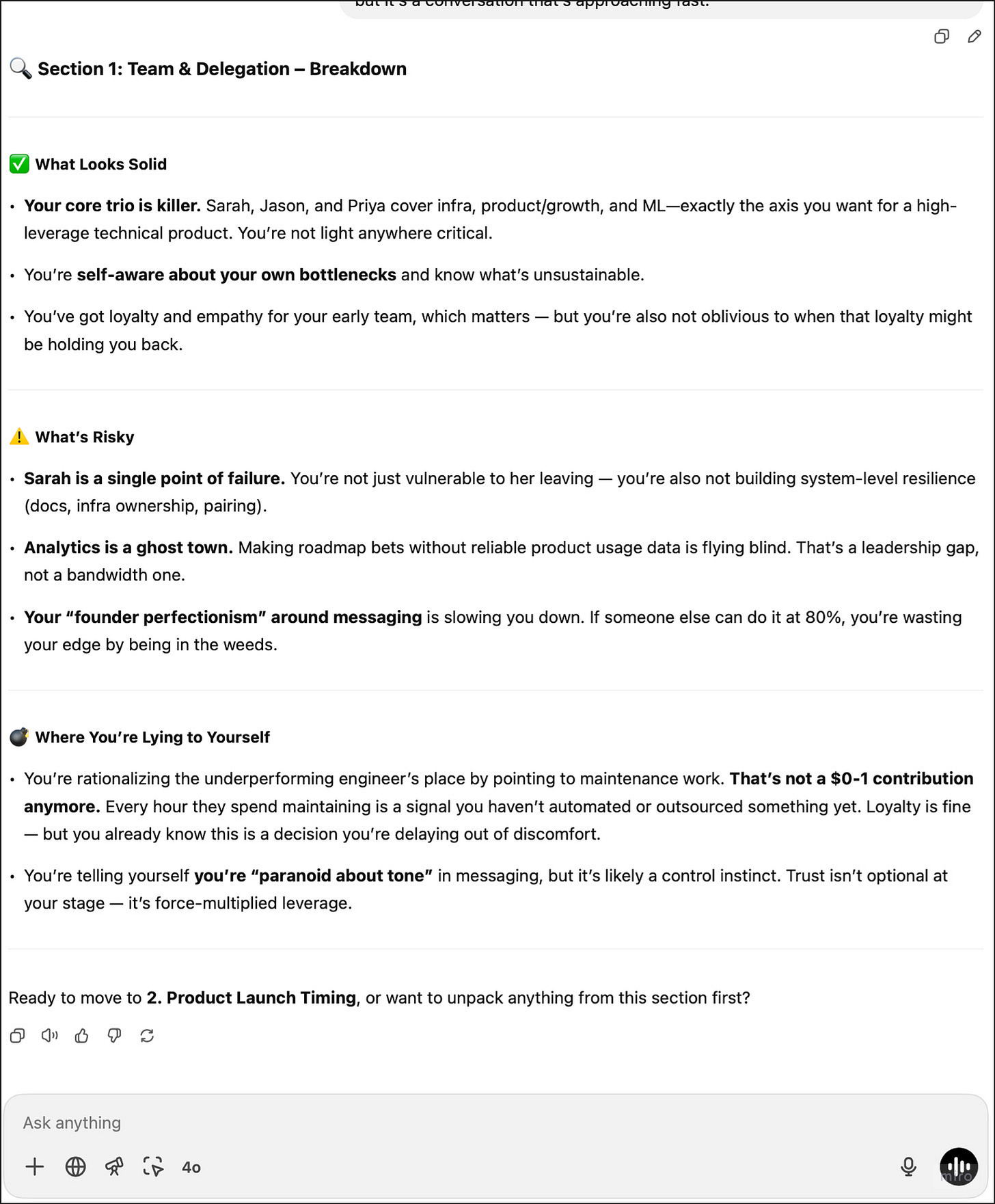🚨 10 Brutal Startup Decisions You’ll Regret
(Unless You Read This First)
Every startup fails a little before it fails a lot.
And most of the time, it starts with one decision that felt right… until it wasn’t.
After years of building, scaling, and debugging both code and companies, these are the 10 decisions I’ve seen first-time founders regret the most—and how to avoid them.
1. Hiring fast to “move faster”
“We’ll fix culture later.”
Except you won’t. You’ll spend 6 months untangling egos, missed context, and the wrong people in the wrong seats.
🧠 Fix: Hire for alignment, not just skill. Slow is fast.
2. Letting product and brand grow separately
“We’ll clean it up post-MVP.”
Congrats—you just built two different companies: one users trust, and one they experience.
🧠 Fix: From day one, make UX, tone, and support part of the product—not an afterthought.
3. Waiting too long to ship
“It’s not ready yet.”
Neither was Airbnb. Neither are your competitors.
🧠 Fix: Launch before you’re proud. Let real users finish the design.
4. Saying yes to the wrong early customer
“They’ll pay, so it must be a fit.”
They’ll pay to bend your roadmap into a pretzel.
🧠 Fix: Qualify early users like you qualify hires. You’re choosing them, too.
5. Ignoring technical debt because “we’ll rewrite it later”
Spoiler: You won’t. And now it’s a $50k rewrite + 3-week fire drill.
🧠 Fix: Track debt early. Pay it down like credit. Build margin into your roadmap.
6. Waiting to delegate “until things stabilize”
But the chaos is the job.
🧠 Fix: Delegate when it hurts—before you’re drowning. Otherwise, you’re the bottleneck.
7. Using investor meetings to get validation
They’re not coaches. They’re optimizing for return.
🧠 Fix: Talk to customers to get truth. Talk to investors to get money.
8. Starting without a “kill plan”
“We’ll iterate forever.”
Cool. But if you’re not willing to kill it, you’ll waste years running in circles.
🧠 Fix: Define what failure looks like. And how you’ll decide.
9. Outsourcing your core tech
“Let’s just get this built overseas.”
Cheap dev now = expensive rebuild later.
🧠 Fix: If it’s your differentiator, own it—even if it means building slower.
10. Over-optimizing for the “deck”
Pretty slides won’t save a broken funnel or empty pipeline.
🧠 Fix: Nail the story, but back it with traction. Fundraising is showing what you achieved and your potential, not just a pretty presentation.
TL;DR – Read This Before You Make the Same Mistakes
Hiring fast? You might build a culture you’ll spend months untangling.
Launching late? You’re delaying the feedback that would make it great.
Letting brand and product drift apart? You’re creating trust gaps users can feel.
Chasing the wrong early customer? They’ll shape your roadmap more than you will.
Ignoring technical debt? That’s future-you paying with time, stress, and cash.
Waiting to delegate? You’re the bottleneck. Start handing off earlier.
Using investor meetings as therapy? They’re not here to validate your vision—customers are.
No kill plan? You’ll waste years iterating on something you should’ve shut down.
Outsourcing core tech? Cheap now means broken later.
And if your deck looks better than your funnel? Investors will notice.
Bonus: Startup Clarity Prompt (ChatGPT-Ready)
Want to know which of these decisions might be hurting your startup right now?
Here’s a simple ChatGPT prompt I use to run a self-diagnosis every 6 weeks.
It helps me step back and ask: Where am I overbuilding, overcontrolling, or ignoring red flags?
The assessment covers:
Team & delegation
Product launch timing
Tech debt & architecture
Fundraising strategy
Customer-fit & early roadmap
👇 Below is an example of the kind of output you’ll get.
Get the prompt below 👇
You’re my startup advisor.
I want you to act like a cross between a product-minded CTO and a no-bullshit founder coach.
I’ll answer your questions honestly. Your job is to help me surface what I’m ignoring, overbuilding, or waiting too long to fix.
Ask me questions in these 5 areas:
1. Team & delegation
2. Product launch timing
3. Tech debt & architecture
4. Fundraising strategy
5. Customer-fit & early roadmap
After each section, tell me:
– What looks solid
– What’s risky
– Where I’m lying to myself
End with a top 3 list:
“If I had to only fix 3 things this month, I’d focus on…”
Let’s start.


